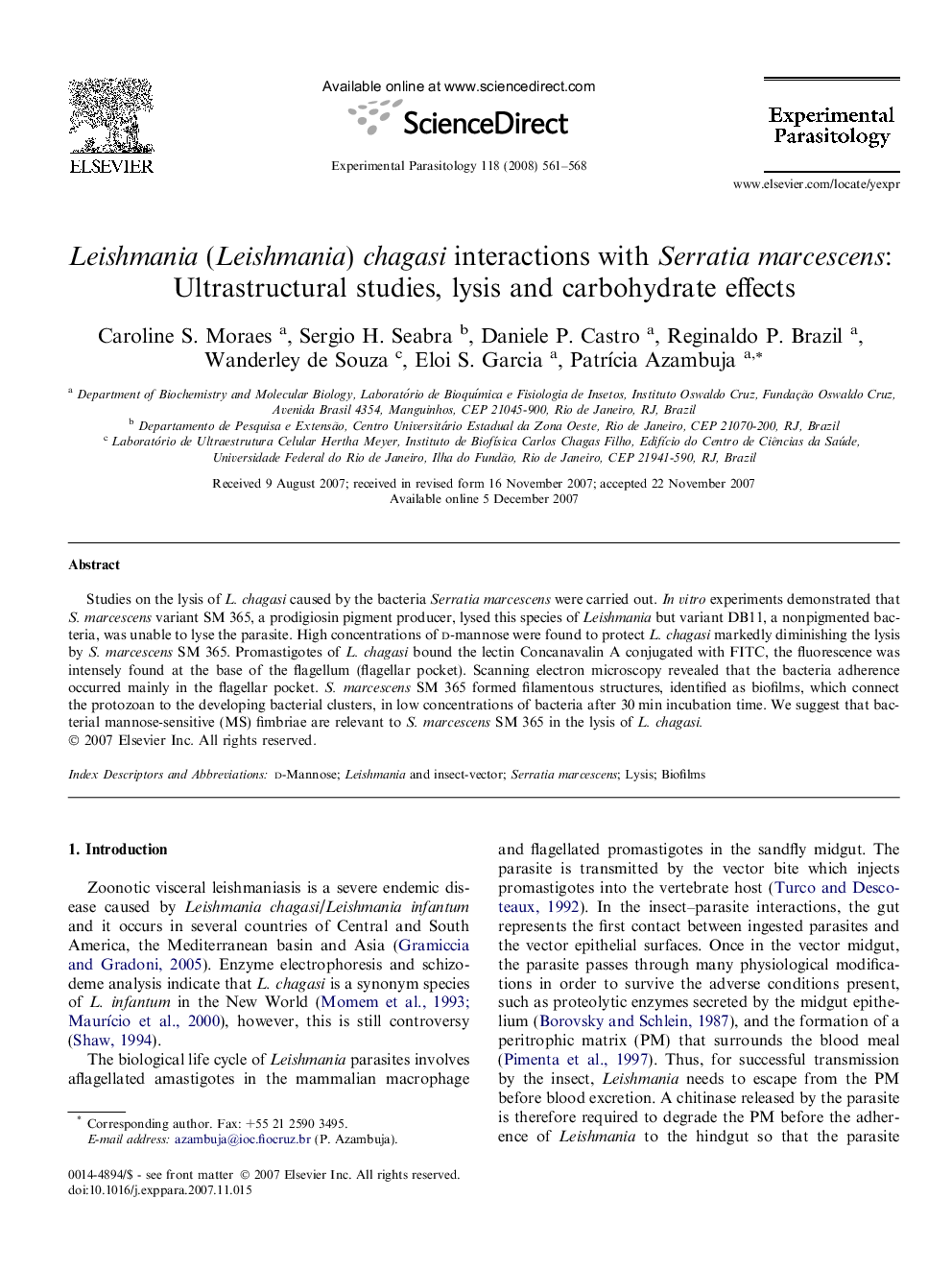| Article ID | Journal | Published Year | Pages | File Type |
|---|---|---|---|---|
| 4371471 | Experimental Parasitology | 2008 | 8 Pages |
Studies on the lysis of L. chagasi caused by the bacteria Serratia marcescens were carried out. In vitro experiments demonstrated that S. marcescens variant SM 365, a prodigiosin pigment producer, lysed this species of Leishmania but variant DB11, a nonpigmented bacteria, was unable to lyse the parasite. High concentrations of d-mannose were found to protect L. chagasi markedly diminishing the lysis by S. marcescens SM 365. Promastigotes of L. chagasi bound the lectin Concanavalin A conjugated with FITC, the fluorescence was intensely found at the base of the flagellum (flagellar pocket). Scanning electron microscopy revealed that the bacteria adherence occurred mainly in the flagellar pocket. S. marcescens SM 365 formed filamentous structures, identified as biofilms, which connect the protozoan to the developing bacterial clusters, in low concentrations of bacteria after 30 min incubation time. We suggest that bacterial mannose-sensitive (MS) fimbriae are relevant to S. marcescens SM 365 in the lysis of L. chagasi.
